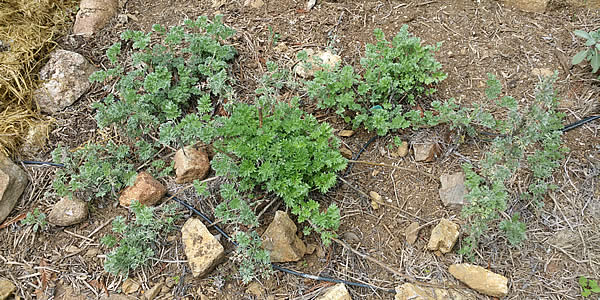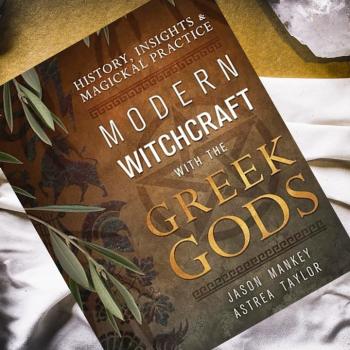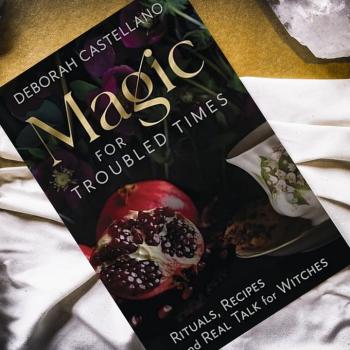[For A.J.]
Allow me to introduce to you to the legendary Wormwood (Artemisia absinthium) It is the fairy deva of this plant which is said to appear with the consumption of its distillation: a liqueur called Absinthe. In the Medieval Physic’s, or medical garden, it was used to purge the digestive system of worms. That was a long time ago.

This photo shows an example of a propagation technique called French layering. Notice the rocks beside or on top of the plant shoots? Lay the stems down without breaking them and use a bit of soil and a rock to hold the stem down until roots grow. I use this method in my perennial herb garden to make babies with my leggy herbs at the end or beginning of the growing season.
My husband and I have carved a terraced garden into the granite redwood forest mountain our home rests upon. The soil is all clay and rock with lots of acidic forest duff for mulch that washes away, downhill, with each drop of falling rain. Adding clean animal manure to the compost mix is essential for any substantial annual vegetable production.
For years we experimented with growing this, and that, and those, until we found a few crops that were such favorites they seem worth the trouble (read as: sustainable). It is easy to eat organic–or even vegetarian–if eggs, Swiss chard, and broccoli florets are handy in the backyard.
It is important to know your zoning and any homeowner rules about community standards. You don’t want to end up in jail like that uppity front yard gardener in Michigan. Here, we are zoned R-A meaning we could have a farm, if we choose, and the amount of livestock is limited by the amount of acreage. We are allowed chickens but not a rooster — unless we are a registered breeder. No, thanks! since roosters begin to crow at about 3:30 or 4 am.
In the state where I live there is even a cottage food law allowing folks to produce and sell cookies, jam, and such without a commercial kitchen. The details vary in each county, but this legislation is a huge leap forward for the rogue lemonade stand!
We once had a few fiber goats that were eaten by a mountain lion. Soon after we had dairy goats that we kept for years and sold once I learned the secrets of how to handle raw milk and make different cheeses, yogurt and butter for my family. The fresh raw milk was yummy, but it means breeding and culling the herd, too. Just not my thing, and I decided that organic dairy is worth every penny asked for at the market.
I miss my fiber goats for the manure and the company of the goats. Shearing and spinning is fun, and the goats are good at clearing a path, too. But mostly it’s the manure. Veggies, being annual plants, just won’t thrive without a lot of handy nutrients.
With chickens, horses, and cows, composted manure is the best for this. Composting means it must sit for a year before you can use it. Using it too soon–while it is so fresh it’s called “hot”–may chemically burn your plants with too much nitrogen.
However, a thin layer (less than 1 inch — about 2.5 centimeters) of goat or rabbit poo may be applied to the planting bed hot without composting. What? No need for piles of manure waiting for their solar return? With this consistent addition to the soil my veggies finally produced enough to avoid the weekly trip to the farmer’s market.
The planting beds need another 2 inches of mulch, compost, or organic matter technically called humus every six months. Did I mention how consistently the goats produce this fertilizer? Let’s just say you can stay in shape by hand shoveling the goat pen — it’s quite the core workout!
Right now, only perennial herbs are growing in the planting beds. Herb lore being my first magickal passion, I collect as many odd herbs as I can find. They live in the beds as honored members, and I plant my annual veggies around them in terraced beds 3 feet wide and 21 feet long (about 1 by 6.5 meters). We will see if this reminiscence renews my interest in keeping livestock; there is no question about their value to the small farm or homestead garden.
Plague laws were developed at the onset of the Industrial Food movement. At the beginning of the 20th century, it was common to set up a dairy or feedlot at the outskirts of the city to lessen shipping costs.
Disease is endemic to this sort of operation, (read Upton Sinclair’s The Jungle). Can you imagine a feedlot or slaughterhouse of cows or pigs encroaching on your neighborhood? Oh, my nose! Too many animals sold by the pound.
It’s different if you’ve given the animal a good life and know it is healthy when it comes time to thin the herd. This is why community farm animal share projects are becoming popular again. If you are interested, search “community supported agriculture” for your local area.
Once it was called a Victory Garden, and I encourage this sort of green-thumb, dirty-trowel approach to keeping the heirloom garden alive and food upon the table, renegade or not. Involve the children, too! It connects us to our food, the land, our ancestors, and the cycle of life.
Is that mud on your knees? Well done!

Patheos Pagan on Facebook.

the Agora on Facebook
Adventures in Wortcunning is published bimonthly on alternate Fridays. Subscribe via RSS or e-mail.
Please use the links to the right to keep on top of activities here on the Agora as well as across the entire Patheos Pagan channel.

















